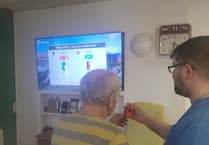JUST one consultant was available at Bronglais Hospital’s A&E department in Aberystwyth in the first full week of September, new figures have shown.
Figures uncovered by the Welsh Conservatives have revealed the “crisis at the heart” of Welsh A&E departments, as every single one failed to meet recommended safe staffing levels.
According to Freedom of Information requests made to Wales’ health boards, all its major hospitals are falling well short of the recommended ‘baseline’ for staffing levels in emergency departments.
The Royal College of Emergency Medicine (RCEM) sets a ‘baseline’ for the number of WTE (working-time equivalent) consultants which should be employed in the department to guarantee safe cover.
At present no hospital is close to meeting this baseline in Wales, placing “patients in potential danger,” the party said.
The most understaffed A&E unit was Aberystwyth’s Bronglais Hospital, which had just one consultant out of a baseline of eight - equivalent to having 13 per cent of the recommended staffing level.
Bronglais was followed by the Central Valleys’ Royal Glamorgan Hospital (26 per cent), and Ysbyty Glan Clwyd near Rhyl (32 per cent).
Elsewhere in the Hywel Dda Health Board region, Glangwili Hospital in Carmarthen operated at 64 per cent over the same period, with Withybush Hospital in Haverfordwest at 41 per cent.
Ysbyty Gwynedd, part of Betsi Cadwaladr Health Board, had nine consultants against a recommended 13.7, leaving the department at 66 per cent of working capacity.
The figures exclude locum consultants.
Welsh Conservative Shadow Health Minister and Montgomeryshire MS Russell George said: “It’s really concerning that as we approach winter, we still have seriously understaffed A&E departments to the detriment of patient safety and staff well-being.
“That not a single hospital across Wales is meeting the recommended baseline of medical professionals is disgraceful, and the lack of some to fund that minimum level shows something deeply wrong with in the Labour-run NHS.
“It is no surprise that this was the month that saw the worst ambulance response times on record given that fewer doctors in A&E means patients are seen less quickly, forcing ambulances to wait in loading areas because they cannot handover patients promptly.
“It is why Wales has the worst A&E waits in Britain.
“It is why we need winter war rooms that are 24/7 data-driven control centres to provide accurate information on bed capacity in hospitals and care homes, run by “clinicians and experts” who can identify pressure points and act to reduce deadly ambulance delays and lengthy waits in A&E.”
Hywel Dda University Health Board did not respond to comment before Cambrian News went to press.





Comments
This article has no comments yet. Be the first to leave a comment.